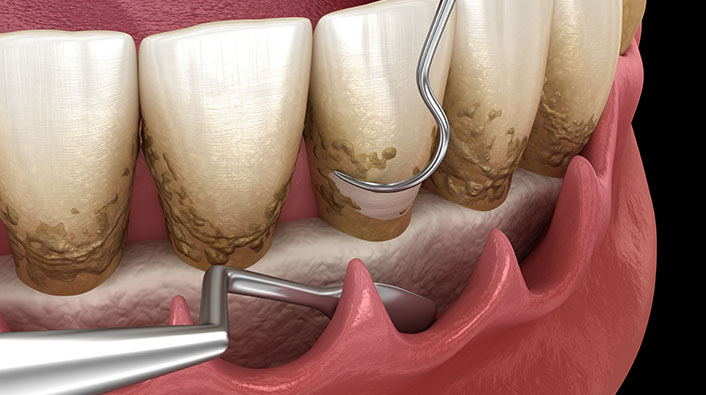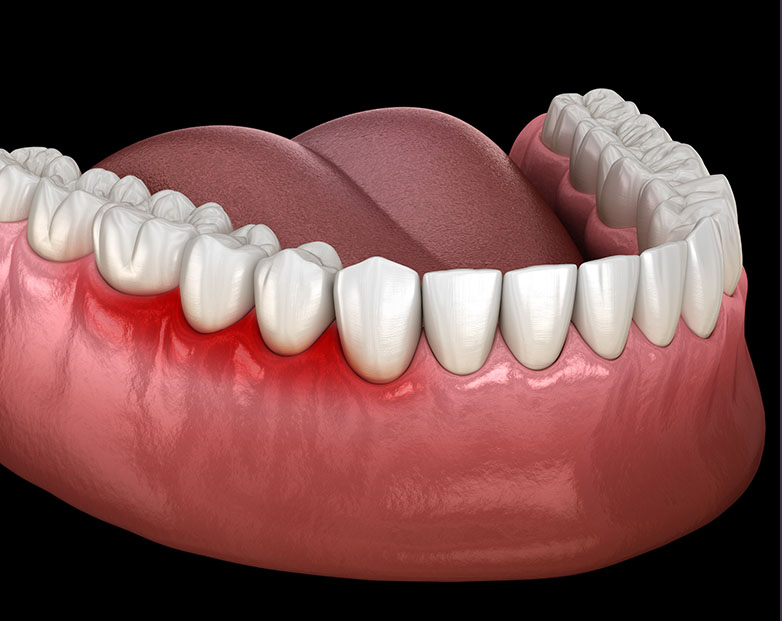
Speak to your doctor if you experience the following symptoms:
- If your gums bleed during brushing
- If the bleeding gum area is sore while drinking cold water
- If pus comes out of the gums
- If you see tartar buildup
- If you experience bad breath
- If your teeth feel weak when chewing hard food
Periodontal Disease
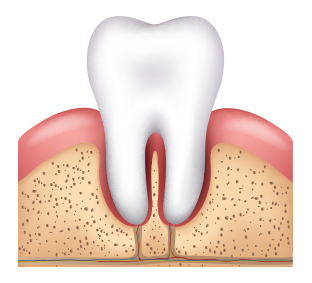
STEP 01
Healthy Condition
The gums around the teeth are pink, and the gums do not bleed. You should receive scaling every 6 months to 1 year and maintain healthy periodontal tissue with proper brushing.
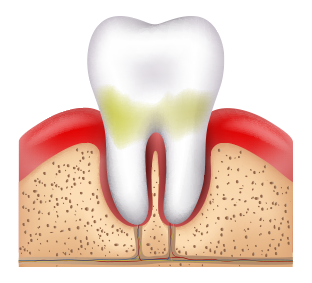
STEP 02
Gingivitis (reversible)
The gums around the teeth are swollen red and bleed when brushing. Adjusting the frequency of regular cleanings may be necessary to get back on track to oral health.
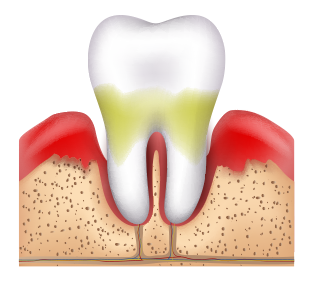
STEP 03
Chronic Periodontitis (intervention needed)
Gums are swollen, constantly bleed and a foul odor can be detected. Radiographic evidence of bone loss is noted and teeth start to exhibit mobility. A throbbing pain can also be present. Periodontal surgery may be necessary to correct the issue before further break down. After intervention, periodontal maintenance treatment should be performed by visiting the dental office every 3 to 4 months.
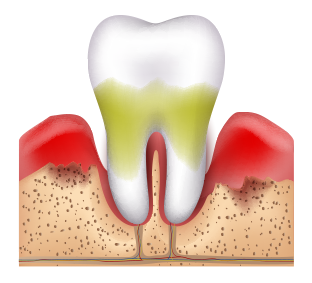
STEP 03
Advanced Periodontitis (end stage)
Teeth suffering from end stage periodontal disease will have irregular mobility due to the destruction of supporting bone structure. Bleeding, swelling, and pain when chewing are common symptoms. The prognosis of the tooth is poor and may require removal.
TYPES OF PERIODONTAL TREATMENT
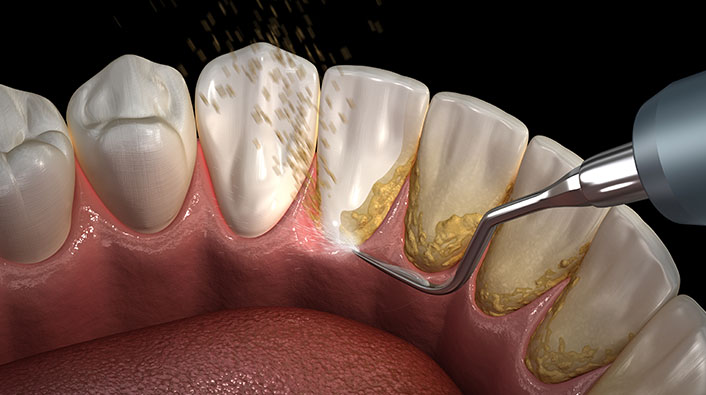
Regular Hygiene Visits
Regular hygiene visits with your favorite hygienist will eliminate superficial plaque buildup on teeth.
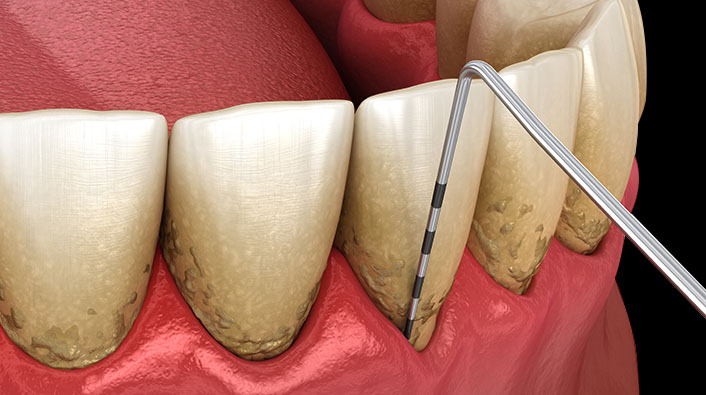
Scaling and Root Planing (SRP)
Also commonly known as “deep cleanings”- scaling and root planing eliminates plaque and tartar buildup below the gums and on root surfaces that cause inflammation and periodontal disease that destroy the supporting bony structure of teeth.
